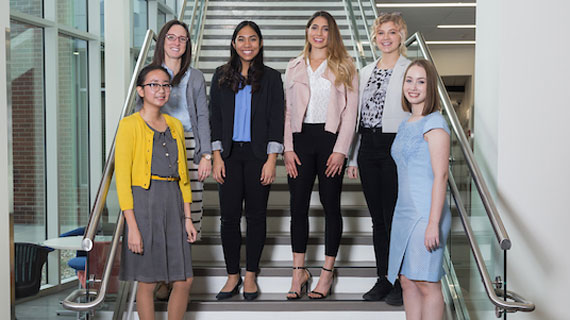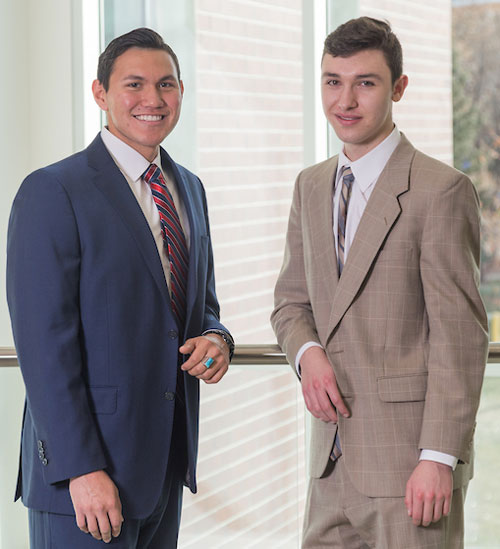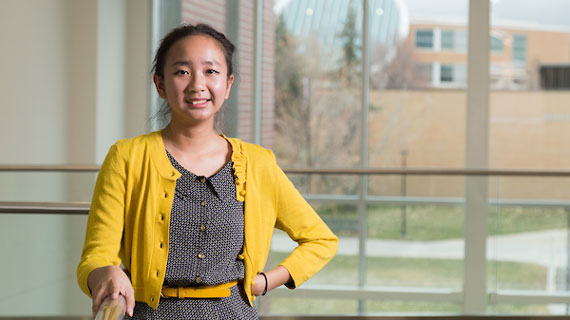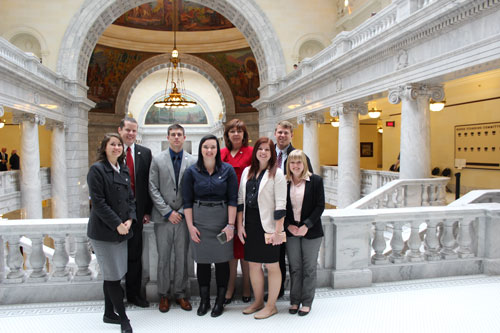What to Wear for Professional Dress Codes
Posted: April 10, 2017 | Author: Cami Mathews | Read Time: 3 minutes
 Whether a career fair, job interview, or special event, every professional encounter has a specific dress code. No need to know all of the rules, we’ve created a cheat sheet for you.
Whether a career fair, job interview, or special event, every professional encounter has a specific dress code. No need to know all of the rules, we’ve created a cheat sheet for you.
Business Casual
When it comes to a relaxed, yet professional look, business casual is the way to go. By definition, business casual is less formal than traditional business wear, but is still intended to give a professional and businesslike impression.
For women, business casual means slacks (not jeans), dresses, or skirts. Dresses and skirts should be knee length or longer, paired with nylons, and closed toe heels or flats. Slacks or skirts should be worn with a nice a blouse and a jacket, or cardigan.
For men, it is appropriate to wear trousers or slacks, a collared shirt (tie optional), and a sweater or sports jacket. Shoes are often an afterthought for many men, but poor footwear choices can ruin an otherwise polished look. Oxfords and loafers in brown or black are a good match with most outfits.
Pro Tip: In preparation for an interview, take the time to know the company’s dress code. Choose clothes that make it look like you already work there.

Business Professional
There are some standard expectations in professional settings, and this is where business professional attire comes in. You should not be discouraged from letting your personality shine, but it is critical to adhere to business standards if you want to be taken seriously in your role.
For women, a business style dress, dress with a jacket, or a pantsuit will work perfectly. Women can also pair a professional skirt with a blazer, plain heels or flats with a closed toe, and stockings.
For men, darker toned suits are the way to go. The suit should be paired with a button up shirt and a tie (pocket square optional). Shoes should be professional and polished with socks that match the color of the suit (don’t wear white socks). Belts should have a simple buckle and match the material of the shoes.
Pro Tip: The first impression made on a potential employer is the most important. Err on the conservative side as a sign of professional respect.

Special Events
Whether it is a networking event, awards banquet, corporate event, or holiday gala, there is always a chance to dress up. Invitations to special events often include a notice of suggested attire. Most categories for events fall into black tie, black tie optional, or cocktail-hour attire.
For women, long or short dresses are appropriate for all types of events, as long as they are not too revealing. Black tie events mean floor-length gowns, elegant jewelry, and heels. Some women opt to wear a black, elegant pantsuit with accessories. Black-tie optional events allow for some choice with the length of dress and types of accessories. Cocktail-hour events are where the little black dress can become an elegant featured performer.
For men, the event dictates the attire. Black tie events mean formal attire. That means a black tuxedo and a white button-down shirt. Black tie optional events mean a black suit is just as appropriate as a tuxedo. Cocktail-hour events still require a suit with dark colors preferred.
Pro Tip: For men and women attending events after 5 p.m., allow for some fun in attire. For men, spice up the suit with a fun bow tie or necktie. For women, add a string of pearls or matching jewelry set to make the look come together.
Now that you have a better idea of what to wear, let the Southern Utah University Professional Closet help you pick out the best outfit.
This article was published more than 3 years ago and might contain outdated information or broken links. As a result, its accuracy cannot be guaranteed.
Tags: Blog Campus Resources


